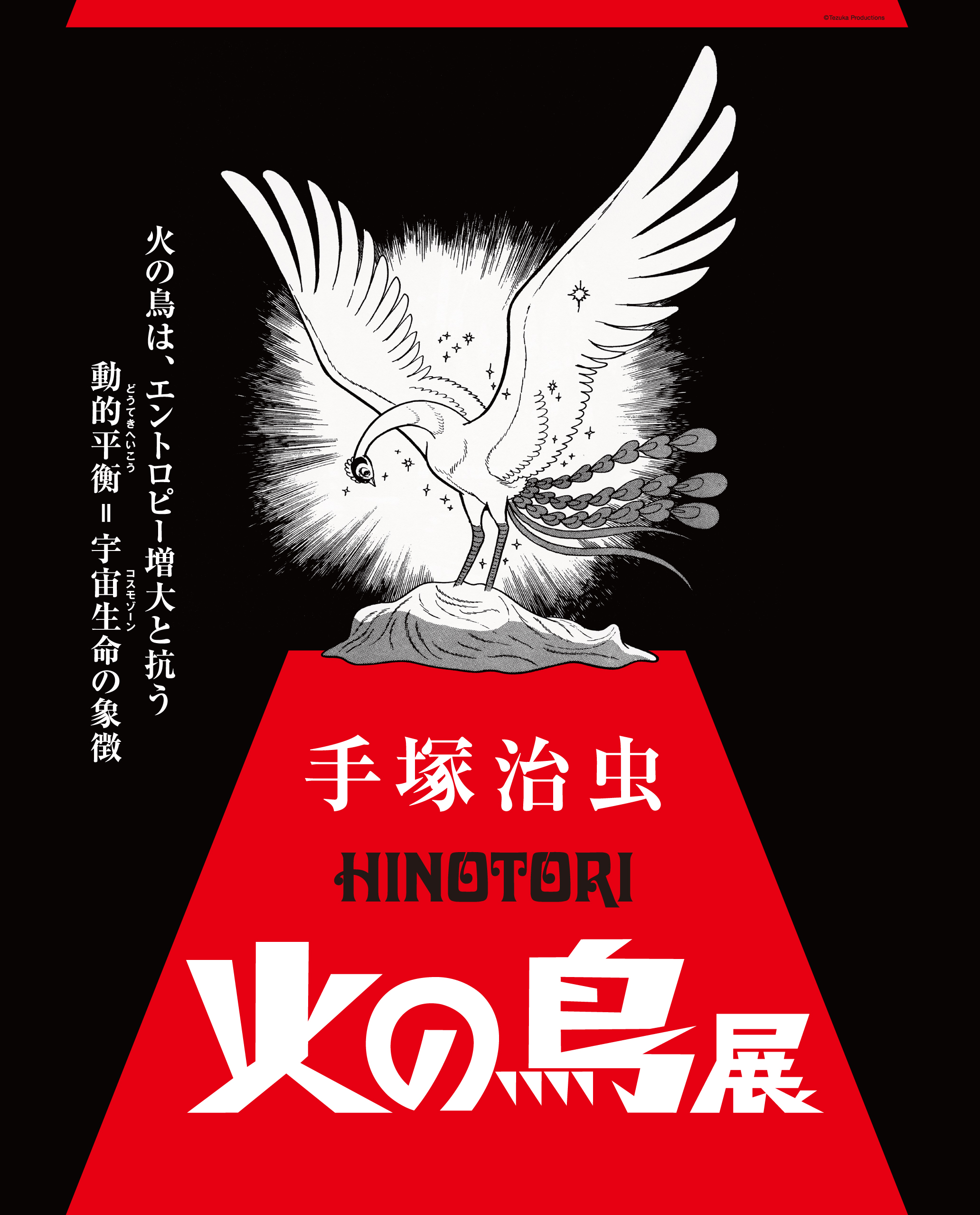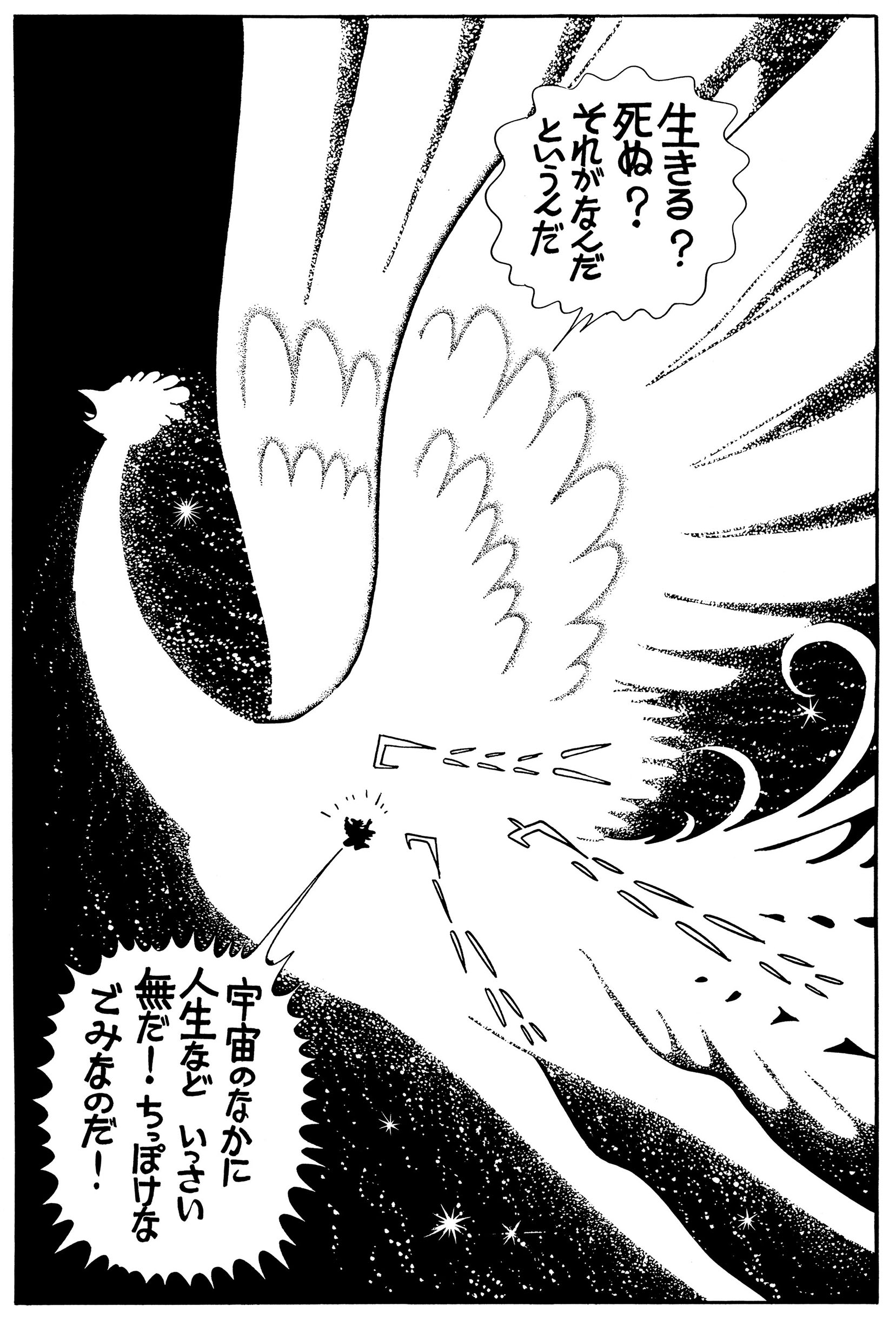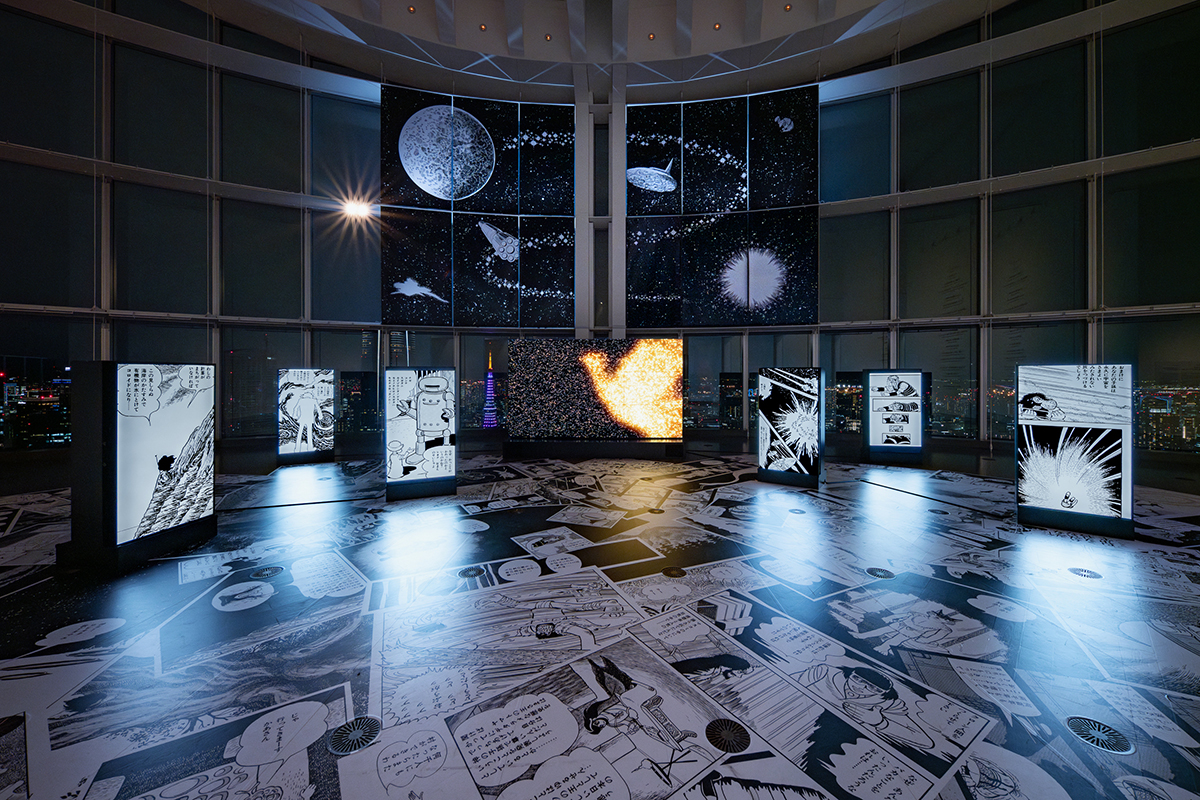OSAMU TEZUKA’S HINOTORI EXHIBITION
The work of Osamu Tezuka continues to shape the artistic and philosophical landscapes of Japanese pop culture. Among his numerous masterpieces, Phoenix (Hinotori) stands as his self-proclaimed “life’s work”. A sweeping epic that intertwines past and future, Phoenix is a meditation on life, death, and the human struggle for immortality. Tokyo City View hosts the first large-scale exhibition dedicated to this legendary work. Running from March 7th to May 25th, 2025, Osamu Tezuka’s HINOTORI Exhibition offers an unprecedented look into the philosophical depths and artistic brilliance of this timeless saga.
Phoenix stands as one of the most ambitious and profound works in the history of manga. Spanning millennia, from the mythic past to the distant future, the saga intertwines human ambition, moral dilemmas, and the unrelenting cycle of life, death, and rebirth. At its heart lies the eponymous Phoenix, a being of divine power, whose blood grants eternal life but whose presence offers far deeper wisdom: the realization that eternity is not a gift but a burden. The recurring motif of the bird whose blood grants eternal life serves as a metaphor for humanity’s relentless pursuit of longevity and enlightenment.

Main visual of HINOTORI Exhibition © Tezuka Productions
Tezuka devoted decades to Phoenix, crafting it as his life’s work. The narrative structure is strikingly unconventional, oscillating between the past and the future in alternating volumes. This dual movement creates a rhythmic pendulum, emphasizing the inescapable nature of time and humanity’s ceaseless yearning for transcendence. Each volume is self-contained, yet collectively they form a grand, cosmic meditation on existence, mirroring the eternal flight of the Phoenix itself. The stories within Phoenix explore the vast spectrum of human experience. In Dawn, set in ancient times, we witness the futility of power and conquest, as rulers seek immortality only to meet their downfall. Future, at the other end of the timeline, presents a dystopian world where technological progress has alienated humanity, reducing civilization to ruin. Between these extremes, Phoenix traverses eras of war, enlightenment, love, and despair, always returning to the central question: what does it mean to live?

Phoenix: Karma © Tezuka Productions
Stylistically, Phoenix showcases Tezuka’s mastery of visual storytelling. The fluidity of his paneling, often inspired by cinematic techniques, as much as his genius for image composition, guides the reader seamlessly through time and space. His ability to balance humor with gravitas, simplicity with intricate detail, grants the work a universal accessibility while maintaining its philosophical depth. The Phoenix itself is rendered as a being both majestic and ethereal, embodying an existence beyond human comprehension.
Though Tezuka left Phoenix unfinished at the time of his death in 1989, its incompleteness only reinforces its themes. The story, like the Phoenix, is eternal: rising, vanishing, and reemerging in new forms. Each generation of readers finds fresh meaning in its pages, as its questions remain as relevant as ever. In the end, Phoenix is not merely a tale to be read but an experience to be contemplated, a soaring testament to the boundless potential of storytelling.

Prologue: HINOTORI and Reincarnation Theater © Tezuka Productions
The exhibition features approximately 400 original artworks spanning Phoenix’s 12 main arcs, from Dawn to Sun. The narrative structure of the series is analyzed from a fresh perspective, led by biologist Shin-Ichi Fukuoka, who interprets Phoenix through the lens of bioscience and the concept of “dynamic equilibrium”, a state where life resists entropy and perpetually oscillates between creation and destruction. The exhibition is divided into a prologue and three key chapters as follows:
The exhibition opens with large screens showing pages from the manga, in a cinema room expressing the worldview of Phoenix. The Phoenix is represented as a symbol of changing life beyond time and space. The video work that superimposes it on the vision of life, that of “dynamic equilibrium”, according to which life is a “flux” that continually resists the law of increasing entropy, while endlessly repeating destruction and creation. This spectacular staging takes on even greater proportions in Tokyo City View, which offers a splendid view of the capital from an observation deck.
Read more ...




